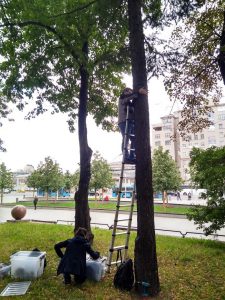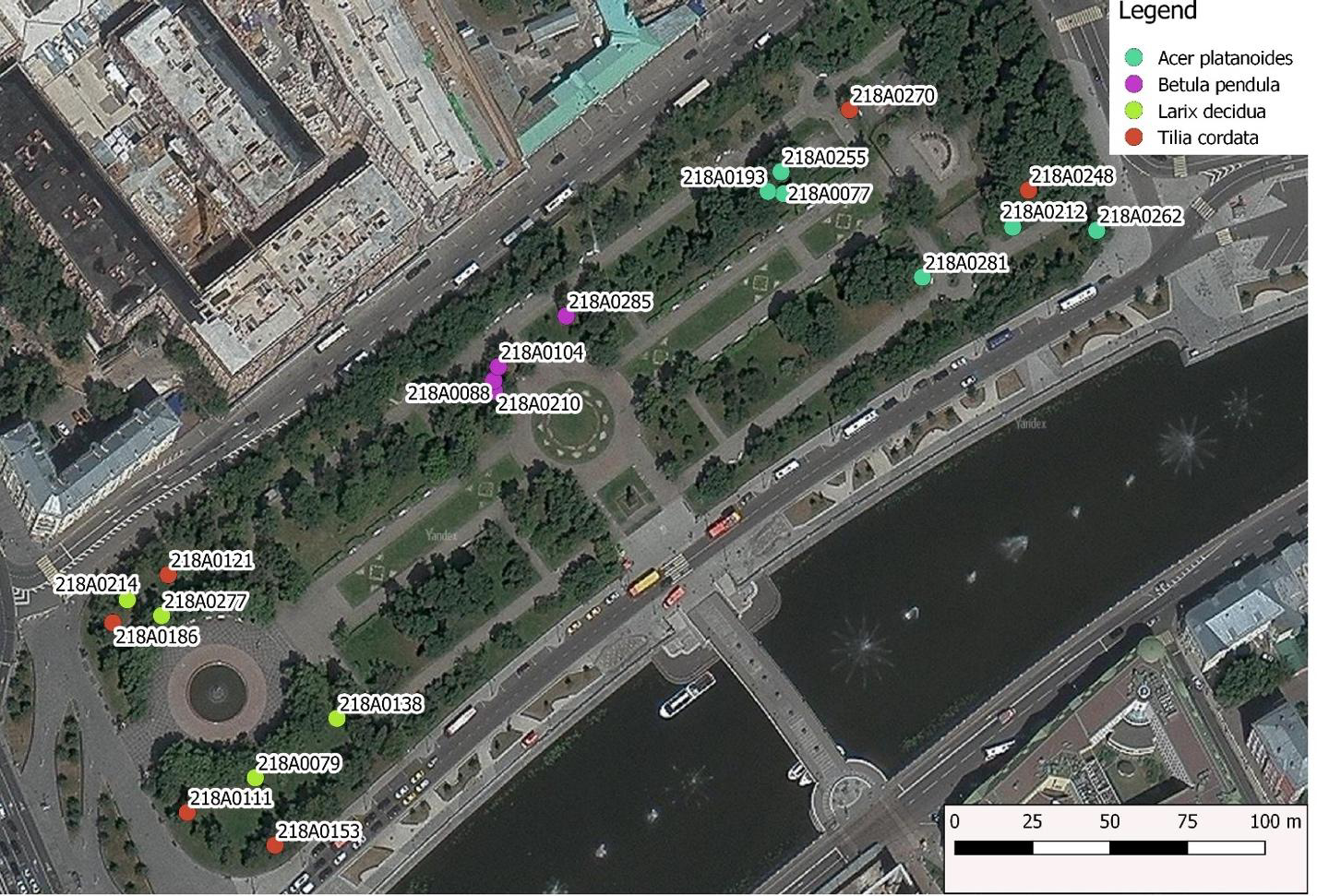Paper “IoT Monitoring of Urban Tree Ecosystem Services: Possibilities and Challenges” was published in the Special Issue Assessing, Valuing and Mapping Ecosystem Services of Forests journal and describes an opportunity of applying IoT technology not only to measure tree functionality through fluxes of water and carbon, but also to establish a smart urban green infrastructure operational system for management.
The paper presents results of a research project developed by SUN Lab scientists (RUDN University), in cooperation with researchers from University of Palermo, University of Tuscia, Campania University “Luigi Vanvitelli”, Research and Innovation Centre, Timiryazev Russian State Agrarian University with the support of the Russian Science Foundation (RSF).
Authors applied the concept of the Internet of Things to monitor urban ecosystems and assessed the technology’s applicability for assessing the ecosystem services of trees. A pilot study was conducted using Tree Talkers (network of wireless, low cost, and multiparameter monitoring devices, which operate using Internet of Things (IoT) technology) to provide real-time monitoring of regulatory ecosystem services in the form of meaningful indicators for both human health and environmental policies.

Wireless devices transmitted information about plant physiology for five months in real time. The results allowed to estimate the contribution of each tree to the urban environment in terms of various parameters.
The object of this study was the green zone in the Bolotnaya Square, which is a subject to strong thermal and anthropogenic influence. To measure key parameters of the ecology and physiology of trees, scientists used inexpensive wireless devices TreeTalker +, previously developed by colleagues in Italy. The devices were attached to 16 trees: larch, linden, birch, and maple. Another device acted as a comparison sensor and was placed in the park outside the crown of the trees. Each TreeTalker + is equipped with spectrometers for analyzing the transmission of light through the crown, sensors for determining the temperature and humidity in the environment of a particular tree. The devices also determined the diameter of the barrel using an infrared optical sensor and the rate of sap flow by heat dissipation. Data from each device went to the cloud storage, from where it went to the online database. Monitoring was carried out from July to November with fixation of key parameters every 1.5 hours.
The data obtained were collected and processed in the software environment R. Further, obtained using IoT devices, the physiological indicators of trees were used to assess such ecosystem services as the absorption of storm water flows, light and thermal energy, carbon sequestration by the plant, and the interception of ultrafine particles by tree crowns. Comparison of the results with the average values for the studied trees was difficult due to the fact that the experiment did not affect all seasons. However, this did not stop the researchers from drawing conclusions about the contribution of each tree to microclimate change, which is especially important for urban planning.
The values of the monitored processes varied spatially and temporally when considering different tree species (up to five to ten times), local environmental conditions, and seasonal weather. Thus, it is important to use real-time monitoring data to deepen understanding of the processes of urban forests.

